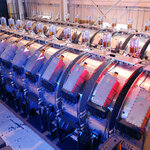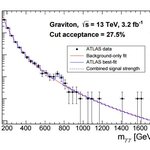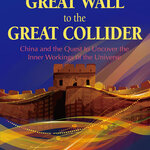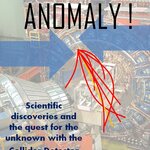Physics
In recent releases announcing the forthcoming publication of new results on the detection of gravitational waves, the collaborations LIGO and VIRGO, as well as the Centre National de la Recherche Scientifique (CNRS, France), explicitly (and wrongly) attribute to Albert Einstein the original prediction of the existence of gravitational waves. A similar comment is made in the Physical Review Letters article by LIGO and VIRGO.
But actually, the existence of gravitational waves traveling at the speed of light was clearly predicted by Henri Poincaré as early as June 5, 1905, as a strict…

LIGO the Laser Interferometer Gravitational-Wave Observatory may announce the detection of gravitational waves tomorrow at 10:30AM Eastern time. I will watch it and live tweet it. The question of the day for most normal people will be... What are gravitational waves? See below for the answer to this question, and below that a live stream of my tweets on the subject as it happens.
UPDATE: The Perimeter Institute a hub of theoretical physics research will have their own livestream following the LIGO press…

The Large Hadron Collider is probably the world’s most famous science experiment. The 27 km-long ring-shaped particle accelerator beneath the edge of the Alps grabbed the world’s attention in 2013 when it proved the existence of the Higgs boson particle. This helped physicists confirm that one of their key theories about the way the universe worked was correct – a huge step for science.
But particle accelerators also have a big impact on our real lives. Even Christmas wouldn’t be the same without them.
Particle accelerators accelerate the tiny building blocks of matter by using electric…

After the ATLAS and CMS collaboration disclosed their first Run 2 results on diphoton searches, less than two months ago, the realization that it would be impossible to keep up-to-date with all the theoretical ideas that were being put forth was immediate. The flood of papers discussing the 750 GeV bump was - and still is - too much to handle if reading papers is not your primary occupation.This is unfortunate, as many of my colleagues believe that the new tentative signal is real. Regardless of the true or spurious nature of the signal, it becomes important to have an informed opinion on the…

With a long delay, last week I was finally able to have a look at the book "From the Great Wall to the Great Collider - China and the Quest to Uncover the Inner Workings of the Universe", by Steve Nadis and Shing-Tung Yau. And I would like to report about my impressions here.
First of all, appearances. Aren't they everything ? The book comes in hardcover with a graphics hinting at the great wall of china and particle trajectories, on a purple background. It is a lean book, 170 pages all in all, and with the slightly larger than usual 7.5"x10" format. It is typeset in a clean and readable…

The following text, a short excerpt from the book "Anomaly!", recounts the time when the top quark was about to be discovered, in 1994-95. After the "evidence" paper that CDF had published in 1994, the CDF and DZERO experiments were both running for the first prize - a discovery of the last quark.
----
The Tevatron soon began breaking one
instantaneous luminosity record after another, and good data piled up at an
accelerating pace. It would only be a matter of time before one of the two
experiments reached a five-standard-deviations excess in one of the top search
channels and decided to…

Being back in blogging mood, I decided I would make a poll among the most affectionate readers of this column - those who will come here to read "blog" pieces and not only "articles which are sponsored on the relevant spots in the main web page of the Science20 site.The idea is that I have a few topics to offer for the next few posts, and I would offer you to choose which one you are interested to read about. Of course, you could also suggest that I write about something different from my proposed topics - but I do not guarantee that I will comply, as I might feel unfit to the requested tasks…

I believe it is appropriate if I restart this column today, after a two-month period of semi-inactivity, with a description of what has been going on in my private - well, semi-private - life.
First of all, I did some pretty chaotic travel in the past eight weeks, something which is getting unfortunately customary as of late. This brought me to Bruxelles, Santiago, Valparaiso, Paris, Lyon, and Rome. I also spent a couple of days of vacation in the Atacama desert, and will be blogging about that in another post soon.
Then, the work for my European network (…

A true-muonium only lives for two microseconds. These atoms are made up one positively and one negatively charged elementary particle, also known as muons. Although they have yet to be observed experimentally, a Japanese theoretical physicist has come up with new ways of creating them, in principle anyway, via particle collisions.
The first method would involve colliding a negatively charged muon and a muonium atom made up of a positive muon and an electron. The second would involve colliding a positively charged muon and a muonic hydrogen atom made up of a proton and a negative muon…

When white light is passed through a prism, the rainbow on the other side reveals a rich palette of colors. Theoretical physicists, who have increasingly migrated toward making up stuff using math, now claim using such numbers that quantum theories of gravity must also have a 'rainbow' of sorts, composed of different versions of spacetime. They further predict that instead of a single, common spacetime, particles of different energies essentially sense slightly modified versions.
Most of you have seen prism experiments. When white light passes through a prism it splits to form a rainbow,…